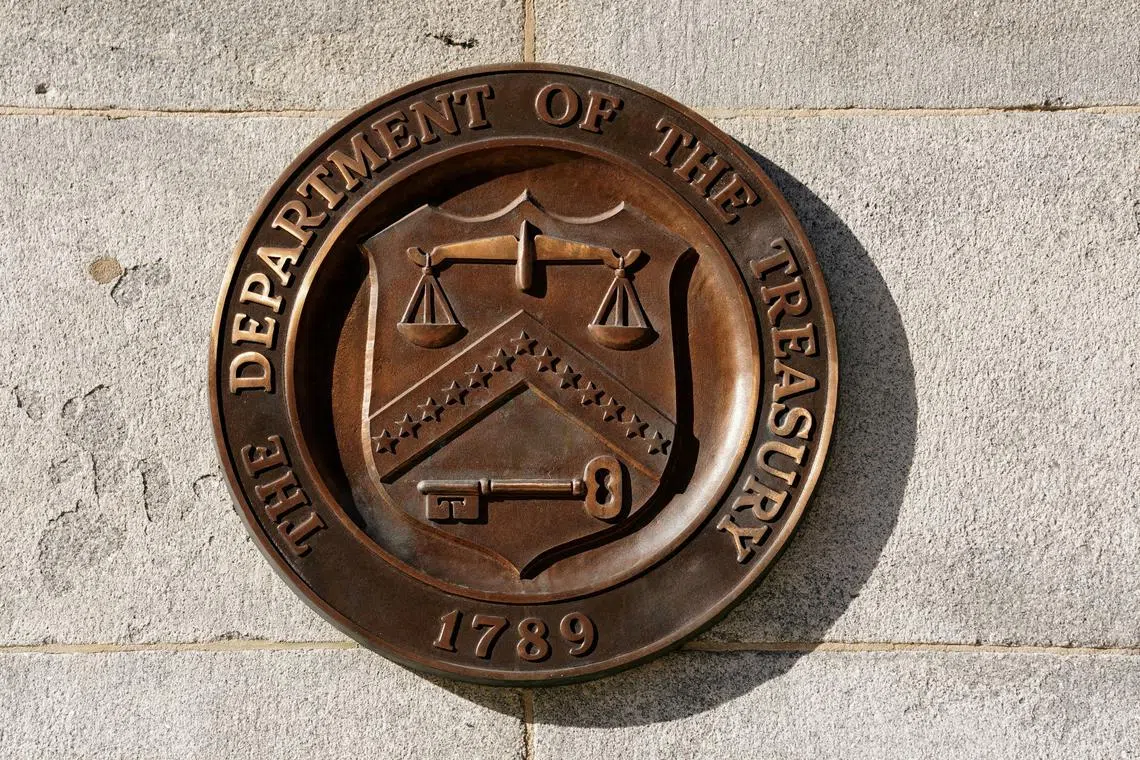Explainer
Why have US Treasuries become more volatile and what does it mean for S’pore investors?
Sign up now: Get ST's newsletters delivered to your inbox

Yields for both 10- and 30-year Treasuries hit their highest levels in years last Friday.
PHOTO: REUTERS
Follow topic:
SINGAPORE – United States Treasury bonds have become more volatile in recent weeks on the back of high interest rates and economic uncertainties that have stoked a sell-off in the safe-haven asset and driven borrowing costs to new highs.
Yields for both 10- and 30-year Treasuries hit their highest levels in years last Friday, breaching 4.8 per cent and 5 per cent respectively after the monthly jobs report
This was nearly double what economists were anticipating and reinforced concerns that the Federal Reserve would keep interest rates high for longer to cool inflation and prevent the economy from overheating.
But by Wednesday, 10-year yields had retreated below 4.6 per cent, while 30-year yields fell to around 4.7 per cent as investors moved funds into safe-haven assets, following attacks by Hamas in Israel. Bond yields fall when prices rise.
Why are US Treasury yields turning volatile?
The director of the International Monetary Fund’s (IMF) Monetary and Capital Markets Department, Mr Tobias Adrian, told a briefing on Tuesday that the rise in US Treasury yields is due to heightened global economic uncertainty.
This is driving up yields as the compensation bond holders demand for absorbing higher risks and inflation rises, Mr Adrian said.
With core inflation still high and declining only slowly in many advanced economies, some central banks will need to keep monetary policy tighter for longer, the IMF said.
The Fed, for example, has said the labour market would need to soften to get price pressures down and stressed at its September meeting the need to keep interest rates elevated for an extended period.
Officials are debating whether to raise rates one more time this year or hold them throughout most of 2024. The federal funds rate stands at a 22-year high of 5.25 per cent to 5.5 per cent.
Bank of Singapore currency strategist Sim Moh Siong said economists had predicted that high interest rates could send the United States into a recession this year, but the economy has turned out to be stronger than expected.
“However, the economy should slow with the Fed keeping interest rates elevated, with the recession likely delayed to the first half of next year,” he said. This economic uncertainty has contributed to the rise in Treasury yields.
The factors that could contribute to a recession in the US
What are the implications and how will they impact Singapore?
American companies invest heavily in Singapore, so a recession in the US could crimp investments and capital inflow here and further impact growth.
Mr Sim noted that high US rates and Treasury yields have also kept the US dollar much stronger than the Singapore dollar.
As Singapore trades extensively with the US, a persistently stronger greenback
Stock investors have been affected too.
Mr Freddy Wong, head of Asia-Pacific for asset management firm Invesco Fixed Income, noted: “The rise of real and nominal bond yields poses headwinds to both growth and quality equities.
“The relative value of owning stocks has diminished sharply, given the higher risk-free rates for US Treasuries.”
He said higher US rates would also make assets offered in the rest of the world, including Singapore, less attractive, leading to capital outflows from these countries.
On the other hand, with US Treasury yields now at relatively high levels, and given that the Fed is still suggesting a long-term neutral policy rate of around 2.5 per cent, Mr Wong said the current level of Treasury yields is attractive for long-term investors.
“From an asset allocation perspective, higher rates should support a better return outlook for bonds, while putting pressure on stocks,” he added.
UOB interest rate strategist Victor Yong noted that the risks to a Singapore investor holding US Treasuries are currency fluctuations and how changing yields might affect bond prices. The longer until a bond matures, the more it can be affected by rate changes.
“A Singapore investor will be exposed to how the (Singapore) dollar behaves versus the US dollar. Investment returns in Singdollar terms from holding US Treasuries will be eroded if the Singdollar appreciates at the end of the holding period,” he added.

